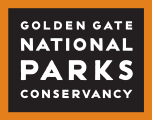Planning for the future of health and parks using Collective Impact
Publication Date
Story/Content
Last Thursday, Institute staff and Healthy Parks Healthy People: Bay Area (HPHP: Bay Area) champions made the trek to Microsoft’s offices in Mountain View to attend a “Collaboration for Great Impact” workshop. We joined our friends who have been working on environmental and climate change initiatives to reflect on the Collective Impact model’s role in our own work with HPHP: Bay Area. Pioneered by the social impact consultants, FSG, Collective Impact is a framework to align the work of different organizations into a single goal. Briefly, the five pillars of Collective Impact are: (1) a common agenda, (2) shared measurement, (3) mutually reinforcing activities, (4) continuous communication, and (5) backbone support.
When the HPHP: Bay Area program started in 2012, the Institute was under no illusions that this would be anything but a seriously complicated endeavor. Not only were we asking for help to create more public programming in the park, but we were asking the collective Bay Area to see nature and parks through the lens of wellness. In working with physicians to prescribe nature and encouraging parks to pave more trails in underserved communities, we have been making small steps towards a change in the broader culture of health, wellness, and parks.
Thankfully, we at the Institute are not doing this alone. Through the years, the HPHP: Bay Area program has cultivated a group of organizations and advocates that is engaged in bridging public health and public parks. As we continue to roll out the HPHP: Bay Area programming and bring more healthcare advocates to the fold, this workshop was a time for us to think critically about the future of HPHP: Bay Area through the lens of Collective Impact and its five pillars of success. Often, we are so wrapped up in the day-to-day operations that it is hard to find the time to reflect and learn from our past efforts.
During the workshop we participated in an exercise that had us imagine what HPHP: Bay Area would look like in 2025 and what would be telltale signs of its success. One partner answered that all awareness campaigns about the significant linkages between nature and wellness are obsolete because communities in 2025 will see that as blatantly obvious. Another partner highlighted the potential lessening of chronic diseases in 2025 as a measurement of success. Working backwards from these visions for the future, our group looked at potential steps we could take in the next month or year to make these goals a possibility. We listed different sectors we wanted to bring into the world of HPHP: Bay Area, as well as plans to create ongoing communication and dialogue within the group. We are still digesting all of the different ideas related to the five pillars that we came up with and will be eager to share them with you soon!
The year 2025 might be over a decade away, but we at HPHP: Bay Area know that change does not happen all at once. We are amplifying our efforts today in order to make sure that communities in 2025 have the motive, means, and opportunities to visit parks and increase wellness.
Special thanks to our friends at ChangeScale for hosting such a great event!


